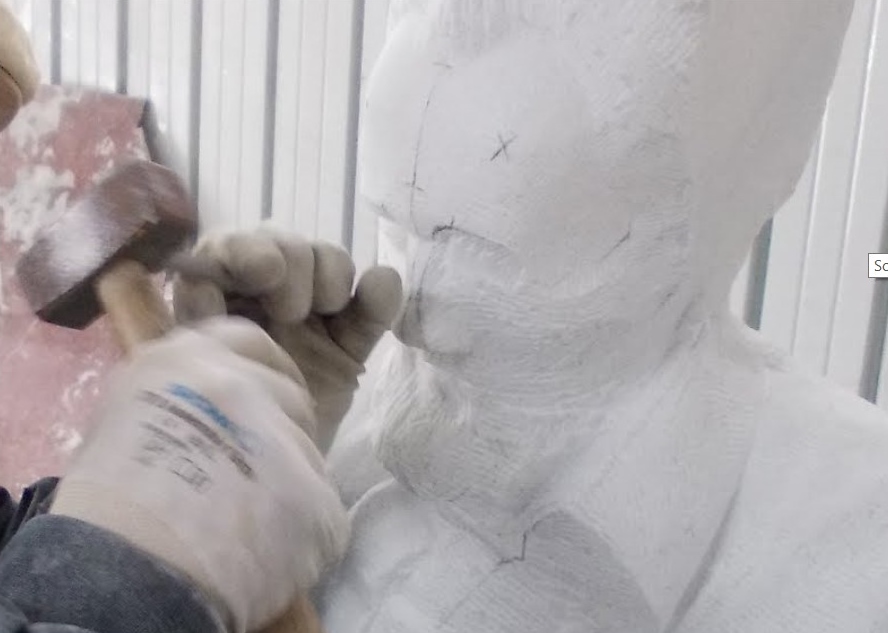
Stonecraft in Molise has ancient roots. It is thought that stone structures and objects were made initially to ensure people’s safety and survival. Entire districts built of stone can be found in some towns in the region, and beautiful examples of architectural and decorative features, such as capitals and statues, are not hard to find.
At one time, when transport was still very difficult due to the distances between places, stonemasons would go in search of raw materials to use and then chisel them on the spot, without bringing them back to their workshops, thus saving time and effort. Working with stone, then as now, is a task that requires patience and care, as well as creativity and imagination.
Stone dressing
Stone dressing begins by drilling the block, followed by cutting it into slabs and the preparation of the “outline” and “intraguardo”. The next steps are “roughing out” and “bush-hammering”, which highlight the features of the material, with bush hammering also serving to remove any deformities.
This step is performed using a bush hammer, which has dense pyramidal points designed to carve out the underlying surface. The impact produced by the bush hammer subjects the material to considerable stress and requires substantial thickness to withstand the surface stresses.
The extraction of Luserna Stone is famous. The stone is a variety of gneiss characterised by its ease of working and splitting, regular schistosity, great strength and durability, which have favoured its widespread use in construction for centuries.
Bargiolina stone is produced in smaller sized slabs, but of exceptional quality. It is a quartzite used with natural split finishes in a variety of grey and yellow shades, and was already praised for its excellent quality in the 16th century by Leonardo da Vinci.
Production
The rock is brought down with the use of explosives. It is divided into blocks by drilling, loading the holes with explosives and blasting. The extracted stone is then transported to workshops, where it can be given various finishes, according to its intended use. These can include polishing with abrasive wheels or flame finishing, which involves intense heating followed by rapid cooling with jets of water.
Another type of finish is bush hammering, obtained with compressed air percussion tools. The stone can be marketed in the form of slabs and naturally split blocks.
The Local Area
Stonecraft is very common in Molise, especially in certain centres such as Oratino, a small town in the province of Campobasso where several craftsmen have made stone carving their main business. Oratino is a characteristic town close to the regional capital, in a location overlooking much of the Biferno river valley.
In 1100 the town was called Laretinum, but was then renamed as Retino, then Laratino, which eventually became Oratino. It was probably a fief of Lombard origin and then came under a succession of various overlords until the abolition of feudalism.
By Camera di Commercio di Campobasso



